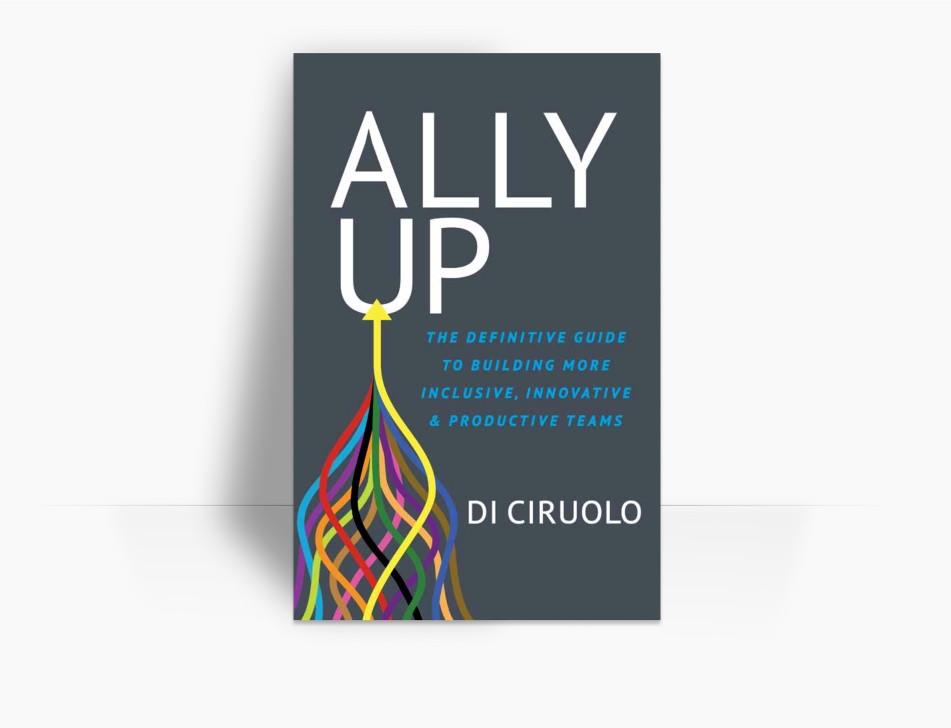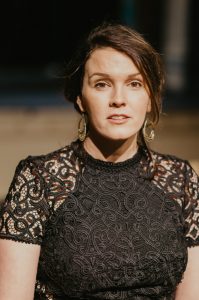It’s imperative for companies and businesses to find ways to be diverse, especially during these times. Whether it is with gender or race, you are subjected to limiting your talent search the more closed off you are of different backgrounds.
Although this topic may seem redundant, you’d be surprised at how many corporations lack diversity. It’s typical that these fundamental practices are shown when you’re first hired on the job or find out about an opportunity, but as you gain more knowledge and become more seasoned in your position, you realize just how good it looks on paper to be diverse than what the reality actually is.
We had the greatest honor and privilege to speak with author of ‘Ally Up’, DEI facilitator, and Head of Inclusion at Jambb, Di Ciruolo., who gracefully shed light on the meaning of diversity and what corporations can do better to be inclusive!

| 1. What does it mean for you to have a commitment to diversity? If a company tells me they have a ’strong commitment to diversity’ and they often do, what I’m going to be looking for is who they are making an effort to include. Who has been historically excluded from your workforce? How do you know? Are you measuring? How are you setting your goals? Because often I’ll see diversity, equity, inclusion & belonging (DEI&B) goals be communicated as “be more inclusive” and that’s great of course, but the problem is if you aren’t setting measurable goals then how do you know if you’re hitting them? Or what isn’t working? One of my favorite humans, Vernā Meyers, at Netflix says that “Diversity is being invited to the party, inclusion is being asked to dance”. I’m not just looking for your photos of your Black ERG (employee resource group), I’m looking for a real commitment. How do you think about the 3million women+ and caregivers who left the workforce during this pandemic? What policies are you creating to bring those folks in? We now know only 3% of Black Americans want to return to in person work, because they are reporting fewer incidences of microaggressions and greater feelings of belonging on teams from home. How is that impacting your ‘return to work’ strategy? How are you including trans+ communities in your Pride at work? What policies are in place to support capital d Deaf communities? How do you support the neuro-atypical? There’s a lot more to diversity than the scientific fallacy of race. 2. What is your approach to understanding the perspective of colleagues? Continuing, lifelong self-education and empathy. For example: If you don’t know what kind of plates to bring to a Black cookout, don’t have a Juneteenth day at work. That will probably cause harm, as we saw this very year when a very big company infamously had chicken and watermelon for their warehouse staff. That’s a real story. And then when they got pushback, people defending them said ’see, we’re not racist, DEI just doesn’t work!” Does it not work or does casual racism not work as inclusion?Another time, I was working with a friend on Inclusion practices for the Deaf community via Google Hangout (he’s HoH) and I asked if I should put the captions on to make communication easier. Because as I always say: communication is half you and half the other person. That person communicating in a different way than you does not negate that responsibility. He was gobsmacked. He thanked me and let me know that a year into this pandemic, I was the first person who thought to meet him halfway. Empathy. Allyship. 3. Can you share some goals for your book ‘Ally Up’ and what others can expect when reading? Yes! My goal is that people who are sitting on the sidelines in conversations about inclusion because they aren’t usually being impacted into the discussion. I give it to you at level zero on a lot of inclusion issues, practices and people. I don’t inform anti-racism policy, I don’t speak for anyone, and I know how to pass the mic (or the platform) when it comes to ally ship. Everyone at some time is going to need to understand the issues of impacted, and marginalized people from an ally ship perspective because not everyone will have first person experience with ‘in-community’ issues. Everyone will need to be an ally to a community they aren’t a part of if we are going to advance our workplaces. My impacted identities are I’m a Latin, queer, mother (of an LGBTQ+ kid), I have neuro-diversity (ADHD), I came up through poverty and foster care. I’ve experienced also homelessness. I still made it here and I still have to know how to ally with others. 4. Advice for companies who want to be more inclusive but don’t know how? Start with curiosity, not guilt. So you found out your workplace isn’t inclusive. Maybe you’ve been experiencing attrition in a particular department, under a particular manager. What would you do if this was any other business problem?? You’d measure. You set goals. You’d test your theories, you’d bring in experts if you weren’t getting it done. The problem with DEI&B is that isn’t what we see happen here. Often, a company will try to ‘go it on their own’ run into resistance from the non-impacted majority and will throw their hands up and say ’see? We aren’t racist, this just doesn’t work!’ Or as with the CEO of Wells Fargo last year ’the sad truth is there’s less Black talent to recruit from’. Completely biased and untrue, as he himself admitted. I say start with curiosity about the issues because then anything effort you make to find out more leads to more self-education and more awareness. Its why you don’t see many well-read racists. On the flip-side if you come to this work with your guilt, everything you do will come from a shame place and your work ends up performative because it’s for the people watching. Not the people hurting. So, please read my book. Please share it. Please see the resources lists from other BIPOC thinkers and creators in the back for the next steps after level zero. We really need everyone in the fight for Inclusion. Last thoughts: Also, fire your toxic managers. You already know who they are. |

Twitter – https://twitter.com/diciruolo?lang=en Website- https://www.diciruolo.com/
Be sure to grab a copy of her book Ally Up :The definitive guide to understanding, supporting, and encouraging inclusive practices in the workplace.
